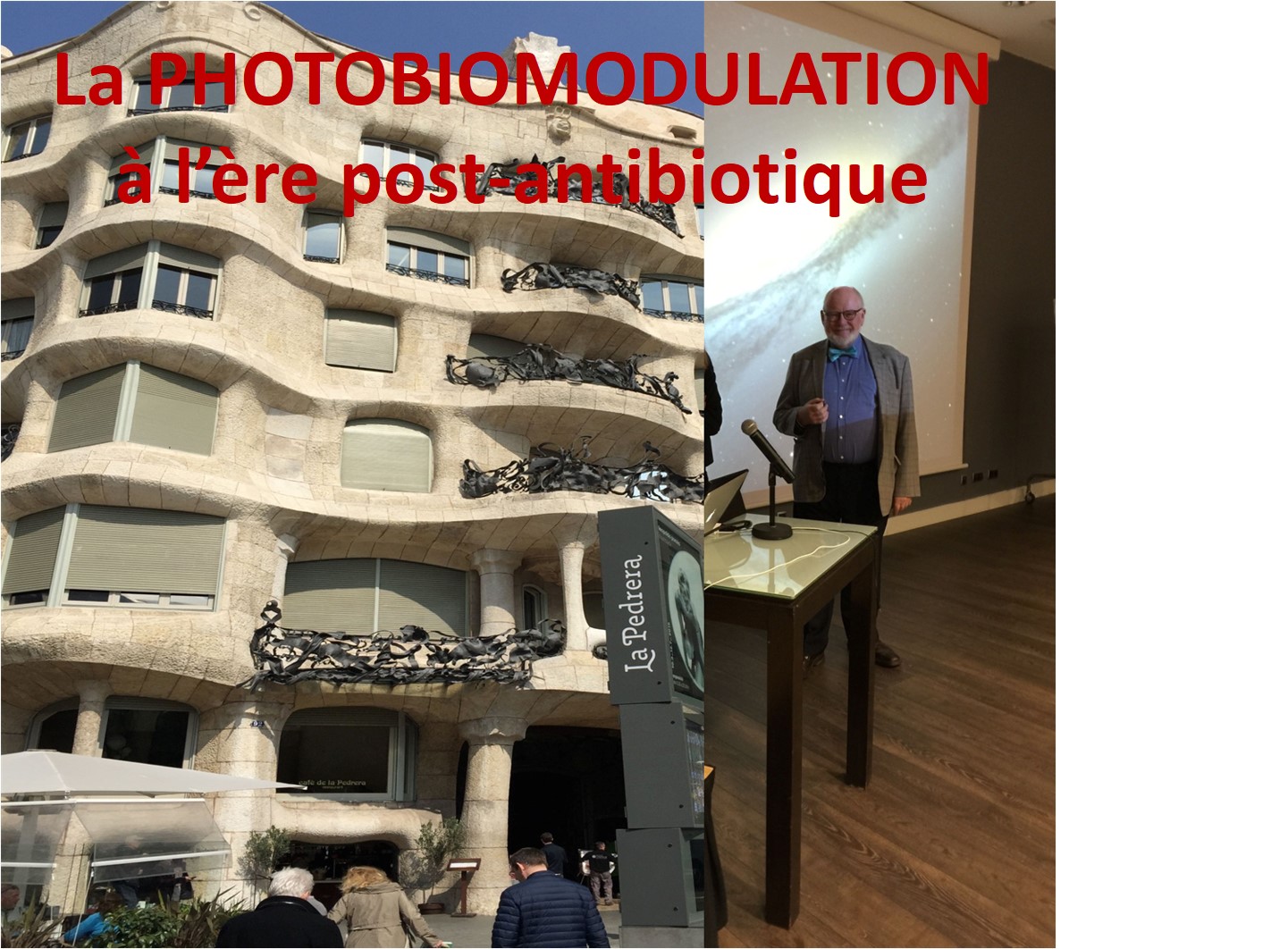La PHOTOBIOMODULATION à l'ère post-antibiotique: Hasard ou nécessité - DR G. CALDERHEAD
La dernière session de l’European Led Academy (Barcelone, Avril 2014) a accueilli le Dr Glen Calderhead: un chercheur de renom en photothérapie.
Expert dans la fabrication de nombreux appareils. Il expose ici les voies de recherche pour un futur très proche.
Comme Pasteur et la vaccination au début du siècle dernier, une autre alternative: les photons pourraient aussi être impliqués dans le traitement et la prévention de nombreuses infections. Rien de nouveau…Connus depuis les temps anciens, les ultra violets sont une source de destruction des germes.
Souvent les humains trouvent des solutions sans en comprendre vraiment le sens. Le soleil veille sur nous depuis la nuit des temps. Il nous est si familier que nous ne lui prêtons guère attention. Si ce bain de lumière nous évitait sans le savoir une invasion infectieuse latente ?
Concentrons-nous sur cette nouvelle saga …
Voir Fichier PDF
Last European LedAcademy session (April 2014 Barcelona) received Dr Glen Caldehead: a famous light researcher An expert in numerous devices.
He exposed the last avenues for a very near future. How Low Level Light therapy can change our view.
As Pasteur in the beginning of last century, photons could be involved in treatment of many infections. This is not something new …as in Antic times, UV was some source for killing germs Often human being find solution without understand meaning..Sun is here for so long time, we are so familiar we dont really don t pay attention to. If this bath of light avoid germs latent infection ?
Let’s us watching and focus on this new saga…
©M .PELLETIER
abstract dr calderhead:
The conundrum of LED phototherapy: inflammation controlled and wound
healing accelerated .... with a photomediated inflammatory response?
R Glen Calderhead
International Research Director, Clinique L, Goyang, South Korea
The three phases of wound healing after any wound are well documented: inflammation up to post-wound day 3 or 4, proliferation up to around day 19 – 23, and then the protracted stage of remodeling which can last up to 6 months or longer, depending on the type and amount of new tissue to be remod-eled. Many clinicians will argue that inflammation is an enemy and should be cut as short as possible. However, the opposite is true: inflammation is absolutely necessary for good wound healing. It is un-controlled inflammation which is the enemy. Anyone with experience of steroid therapy for inflamma-tion will recognize that steroids certainly cut down inflammation, but on the other hand over-application can actually prevent wound healing to varying degrees, because inflammation is essential for proliferation. Why is this so? Because of the cells which are active during the inflammatory phase: mast cells, macrophages and neutrophils, in descending order by number. Mast cells are stimulated to degranulate, releasing first some proinflammatory cytokines and chemokines, and then some powerful anti-inflammatory mediators with chemotactic factors to recruit more macrophages and neutrophils. Macrophages are activated to scour debris from the wound, cleaning up damaged matrix components: at the same time, however, they release fibroblast growth factor (FGF), leaving the matrix as a favour-able environment for the proliferative stage. Neutrophils are the first line of defence of the autoimmune system, killing any invading microorganisms through oxidative burst activity and are also associated with growth factor release, specifically transforming growth factor beta (TGF-β). Phototherapy with light-emitting diode (LED)-bases systems has proved to play an important role in accelerating and en-hancing wound healing after traumatic or iatrogenic wounds, and the near-infrared wavelength of 830 nm is accepted as one of the most effective. In vivo studies have shown that 830 nm LED low level light therapy (LED-LLLT) can induce rapid degranulation of mast cells, inducing an inflammatory re-sponse in normal, undamaged tissue. More macrophages and neutrophils are speedily recruited into the otherwise normal tissue, cleaning up the matrix and releasing multiple trophic factors. The tissue re-sponse is exactly the same as after a real wound but the proliferative phase is invoked more quickly. Reports after surgical wounds have suggested healing is cut by almost one-half with rapid control of pain, erythema and oedema: the classic elements of tumor, calor, rubor and dolor are swiftly mediated by LED-LLLT. Phototherapy at appropriate wavelengths can thus induce inflammation rapidly in nor-mal skin, and equally rapidly quench it, leading to the favourable environment for proliferation which also occurs more rapidly. Studies have suggested 2-3 days for inflammation and up to around 12 days for the proliferative phase, meaning that remodeling can start much earlier than in unirradiated tissue. This is the answer to the LED phototherapy conundrum in both normal tissue, producing reactions which are essential for effective skin rejuvenation, and in the accelerated healing of traumatic or iatro-genic wounds, or indeed any tissue intervention in aesthetic and cosmetic medicine.

